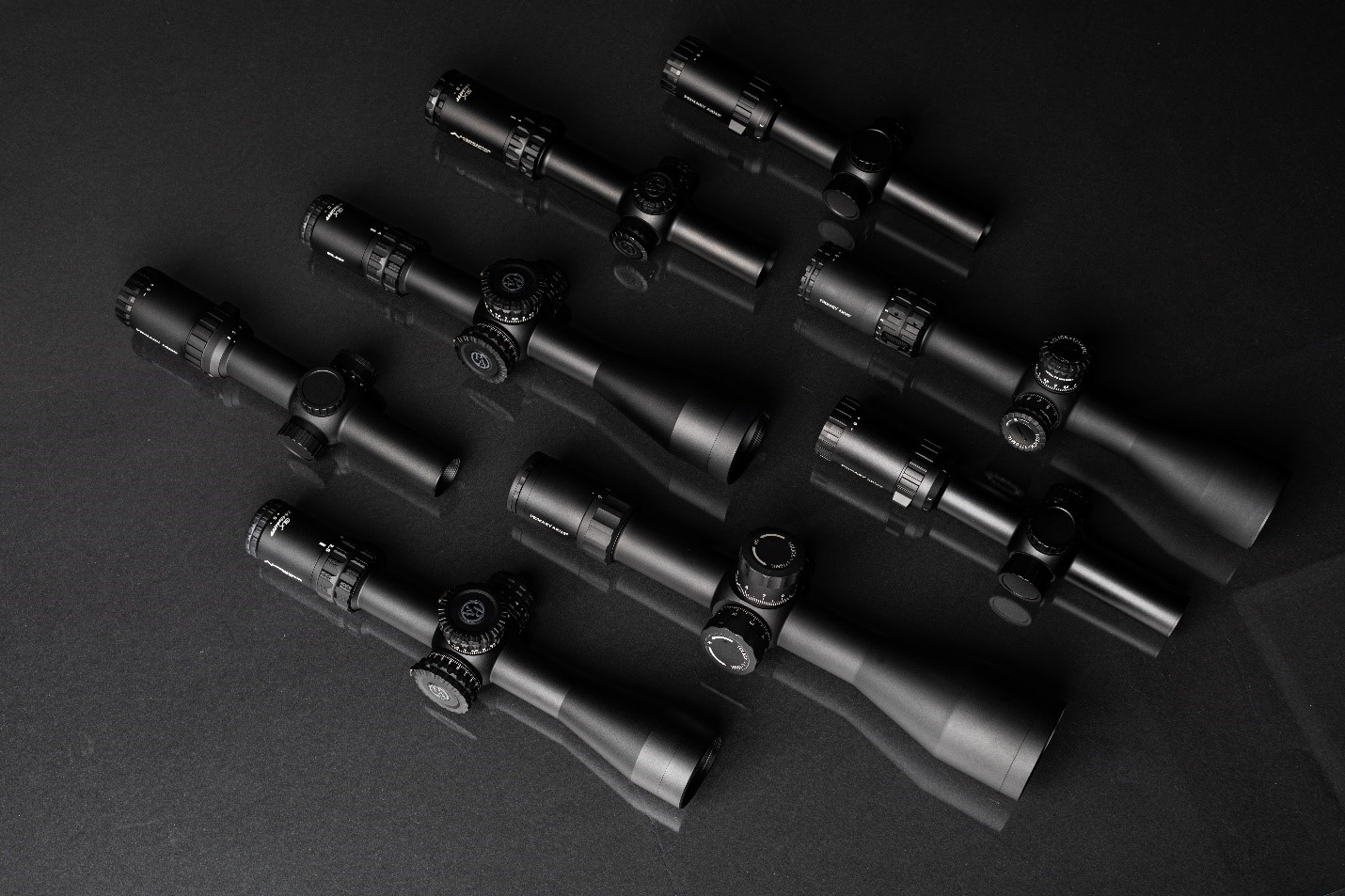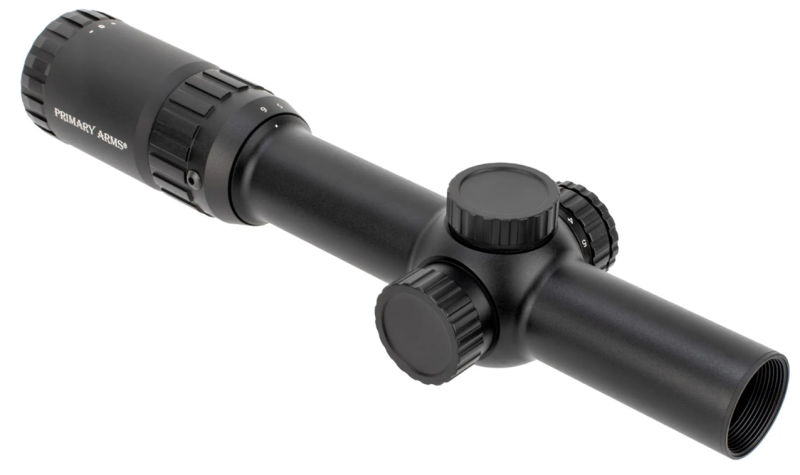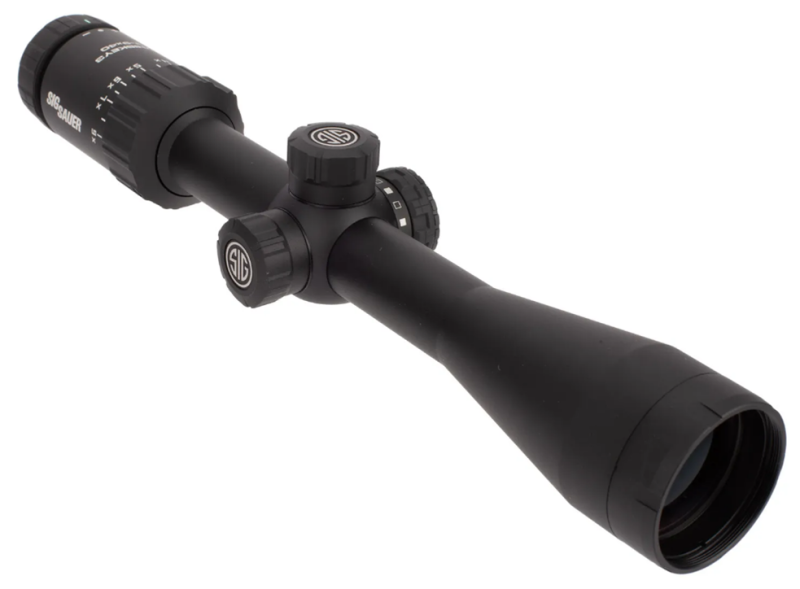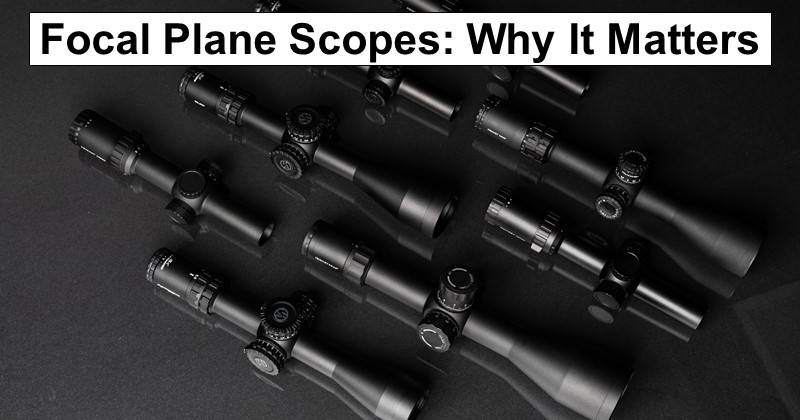What Is the Difference Between First Focal Plane and Second Focal Plane Scopes?

When it comes to selecting the proper scope to mount on the upper receiver of your AR15, many hunters and firearm enthusiasts quickly become bewildered by all the choices available. Although second focal plane optic systems are the most common, they won’t always meet some of the requirements of more discerning hunters. Choosing what optic system suits your needs often means wading through multiple styles of illuminated or non-illuminated MOA or BDC reticles, high or low powered magnifications, and first or second focal plane optics.
You might be able to make a few quick decisions about the type of reticle that works for you and possibly pick out a scope with fixed or variable magnification or an illuminated or non-eliminated reticle that works better for your needs. However, determining whether you want an optic system using an FFP or first focal plane or one utilizing a second focal plane requires a complete understanding of the benefits of an FFP or SFP optic system.
Picking out the proper scope for your needs can be challenging enough. However, one of the more noted problems and less apparent features many enthusiasts think about when choosing an optic system is which focal plane the crosshairs sit inside on the scope’s layout. Both front focal plane and SFP scopes have benefits and merits, and both will meet many of the needs of many high-volume or casual rifle owners alike. However, when selecting a second or first plane optic system that best suits your requirements, you’ll need to understand how each focal plane works, why they work the way they do, and the scenarios each serves best. Remember that not all scopes are created equal, and the benefits you’ll either gain or lose by making an uninformed choice can be a rather costly proposition.
First Focal Plane

Many scopes on the market today feature a second plane scope due to lower production costs and ease of manufacture, which helps keep them competitively priced. Many second focal plane scopes on the market fit the bill and cover most of the needs of a typical hunter or even during competition. 1-6x scopes are a great option for the first focal plan design. There are, however, some specific needs to consider and reasons for choosing an optical system utilizing a front focal plane. Keep in mind that these types of scopes are not rare in the marketplace, but they are pricier than a second focal plane optic system. You’ll discover that there are many manufacturers introducing quality optic systems that provide the benefits of a first focal plane.
One of the most important things to remember is that a first focal plane scope, sometimes referred to as a front focal plane optic system, is typically more expensive. The prime reason for the higher cost is due to the complicated construction of placing the crosshairs of the reticle in front of the lens grouping that determines what magnification you select.
In layperson’s terms, the reticle lens circle you’re sighting through shrinks or enlarges based on the magnification. During these magnification changes, the reticle’s graduated crosshairs and aiming point references stay the same regardless of the magnification chosen.
As an example of how a first or front focal plane scope works, assume you’re sighting two different targets that represent approximately four inches apart in the reticle of your optic system at a magnification power of four. Even when you increase the magnification to maximum, the aiming points on both targets remain the same relative distance from each other in your reticle.
One of the primary benefits of an FFP optic system is that it makes it easier for target acquisition at multiple ranges. Although a little more costly, a front or first focal plane optical system allows you to target at any magnification setting without worrying about the relationship between aim points and trajectories. From a hunting perspective or during match competition, when quick follow-up shots become necessary, and the target range is fluid, firing with an FFP optical system allows you to spot and re-acquire the target with minimal sight adjustments and less time.
You’ll need to remember a few things if you choose to go the FFP route. Although the magnification settings do increase and decrease the size of the reticle image, the crosshairs will appear thicker or thinner depending on the magnification you pick. While many designs you’ll come across offer maximum light collection, if not using an illuminated reticle, it’s possible to lose sight of the crosshairs when sighting a target in a heavily contrasted thicket of dense brush or in low light conditions.
Additionally, while many hunters prefer to perform range estimation using the bracketing method, it’s challenging to do so with a front focal plane scope. You may want to consider picking up a laser rangefinder or if you decide to pick a higher power scope, use the optic system’s onboard parallax adjustment feature.
Second Focal Plane

Scopes using rear or second focal plane optics are the most common optic systems in today’s marketplace. Unlike an FFP scope, the crosshairs are behind the lens providing the magnification. While this manufacturing method dramatically reduces the overall costs of the scope, there are a few things to understand when choosing this type of optic system.
When using an SFP optic system with multiple magnification points, unlike an FFP scope where the reticle size changes and the aiming points remain relational, the reticle of an SFP optic system remains the same size. When using a second focal plane scope, only the target size increases or decreases depending on the magnification chosen. When the requirement to adjust magnification occurs, the aim points and relational trajectories will be different and require adjustment each time.
For example, if you’re sighting multiple targets at various ranges, the two aiming points’ difference might be only four inches at four X magnification. But when zoomed up to maximum magnification, the difference in the two aiming points’ distance shrinks to around one inch and will more than likely require adjustment. Using an SFP optic system often requires an experienced hunter to select a more common or “fixed” magnification power to ensure they know the exact aiming points and trajectory relationships. One thing to check before purchasing an SFP optic system is crosshair deviation.
When adjusting the magnification, the reticle crosshairs shouldn’t shift or deviate. There are, however, a few cheaper models on the market where the crosshairs do shift, so be sure to check this trait before you make a purchase. With all the detractors, you may be wondering why one would choose a second focal plane scope. Aside from a far lower price, having a scope that provides multiple magnification points is very handy for the long shot when you need a precise image of a target far off. Remember that using a rear or FFP scope hampers the ability to correctly bracket targets and determine ranges, whereas using an SFP optic system is the opposite.
Many hunters opt for a second focal plane scope because it helps them determine a target’s range based on the distance between the reticle’s aiming points at various magnification selections. While it may require some advanced hunting practice to work these settings out, a second focal plane optic system will help you estimate ranges while aiming at the target.
Another thing to note with a second or rear focal plane scope is the holdover setting is only accurate at a single magnification setting which is usually the highest. Suppose you need to adjust to a lower magnification. In that case, you either need to be able to perform complex mathematical equations on the fly or have performed enough testing in advance to understand the significance of the distance between the aiming points.
The Ultimate Goal
As you’ve probably realized by now, regardless of the optic system’s focal plane you choose, both are tools made to provide you with the ultimate goals of quick target acquisition and putting your shots where intended. Depending on your shooting style and, in a few cases, your need for higher magnifications and crisp imagery, a front focal plane may be the right choice for you.
However, if budget constraints mean purchasing a scope that most times does the trick, and you need to shave several dollars off the price, you’ll find plenty of optic systems utilizing a second focal plane on the market. Regardless of whether you’re interested in being able to bracket your targets precisely or prefer a scope where the reticle size increases when you increase the magnification, there’s an optic system on the market that will step up to the plate and meet your needs.
What’s Best for You
Optical systems using a second focal plane may be perfect if you’re a traditional hunter who has taken the guesswork out of targeting distances over time and prefer a dial-up method on your targets. Then again, a scope using SFP may work better for you if you don’t usually take longer downrange shots.
Many hunters prefer leaving their variable-powered scopes zoomed to the maximum power to give them an improved field of view or when a target suddenly appears at close range. While there may be a chance to adjust the image, making a quick shot after a missed one is usually not the case. When this happens, and it does more frequently than you think, hunters are forced to make a quick shot at lower magnifications. Using a scope with FFP in this situation typically means the reticle may be too small to allow a hunter to get a precise point of aim at shorter distances. An SFP scope can improve aiming points for close-up shots in close-range target shooting.
However, when using an FFP optic system specifically to improve target acquisition for follow-ups, think about the number of times the game you were hunting remained in place after your initial shot. A scope utilizing a second focal plane will handle most of your hunting requirements and put a little more money back in your pocket in most hunting scenarios.
For the more casual hunter or rifle owner, the cost of an FFP optic system often outweighs the benefits, especially when needing to make determined adjustments with little time pressure. Additionally, an SFP scope is perfect for casual and recreational rifle owners, especially when they prefer shooting at low or medium scope magnification.
Conversely, if you’re the type of hunter who loves out in the open shooting of longer-range shots, and using holdovers is necessary and frequently becomes a part of your shooting style, you may want to consider an FFP or front focal plane optical system. FFP optical systems often provide an edge during a match for the competitive gun owner, especially when needing to fire at three or more different targets at different ranges or when the scope is dialed down to low magnification. A competitor will want to consider mounting an FFP scope that provides more rapid and accurate target engagement.
Whichever one you finally decide to pick, the trick is not to get lost in the myriad of features scopes on the market provide, such as various reticle trees, multiple MOA settings, intuitively accessed windage and elevation turrets, and sizes of the scope’s objective lens. All are essential features of a new scope, and all provide specific features you’ll want or need to use when out in the field hunting. However, one of the essential features you’ll want to examine and decide on before all the others is sighting through a scope utilizing first or second focal planes.
Understanding the primary differences between SFP and FFP scopes and matching the features of either one to your shooting styles and requirements will ensure better hunting experiences and far less frustration if you remember one thing. The choice between an optical system utilizing first or second focal planes parses down to application. How you intend to shoot and the practical applications surrounding your hunting or shooting preferences will dictate the type of focal plane you’ll need to pick. When it comes time to choose, understanding how each focal plane optical system works and its benefits will go a long way in picking out the focal plane that works best for you.
[Note: This was a guest post.]

Leave a Reply